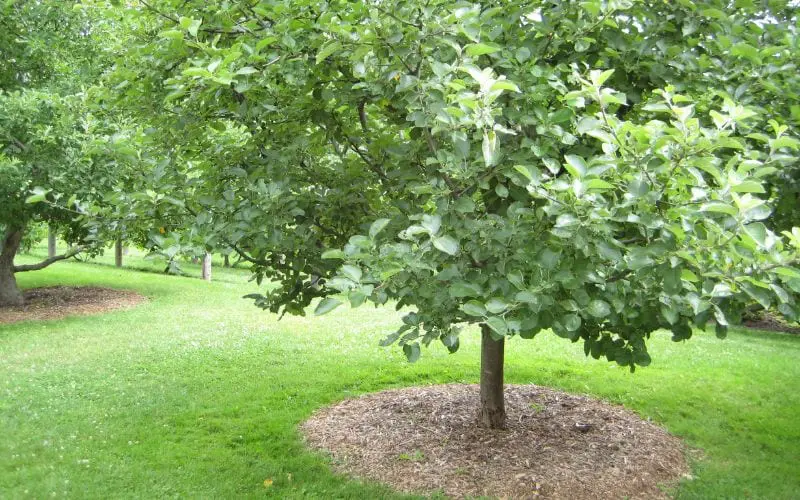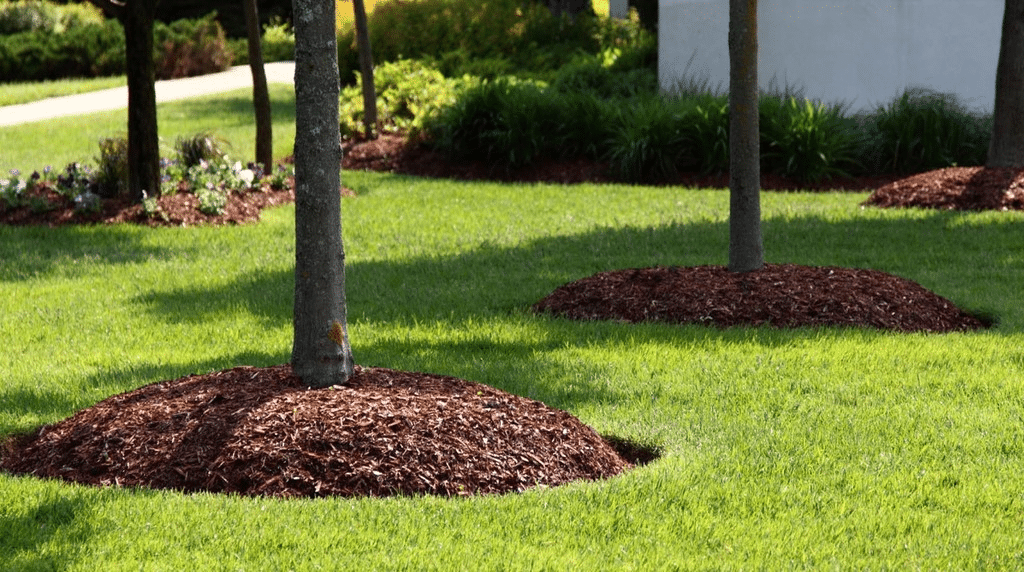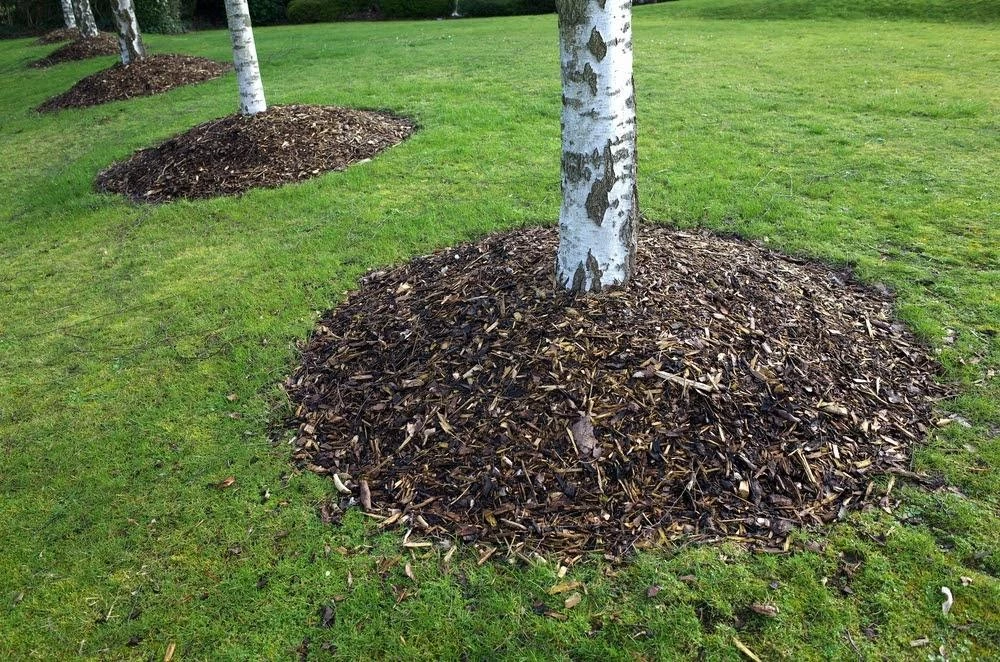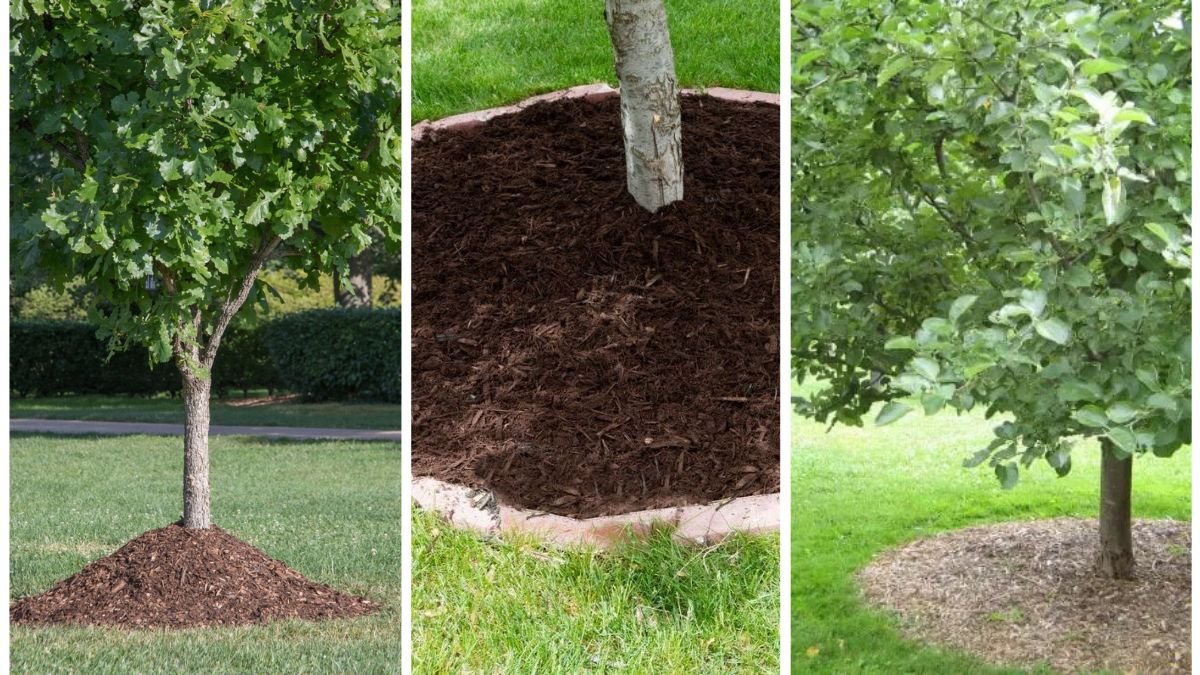When the crisp air of autumn arrives and leaves start to fall, most gardeners shift their focus to raking, composting, and preparing flower beds for winter. But there’s one task that often gets overlooked: mulching around trees. While many see mulching as a springtime chore, applying mulch in the fall is one of the smartest moves you can make to ensure the health and longevity of your trees.
Mulching isn’t just about creating a neat, polished look in your garden—it provides critical protection and nourishment, especially as trees prepare for the stress of winter. In this article, we’ll explore why mulching around trees in fall is a must, the science behind it, and how to do it correctly for the best results.
What Is Mulching, and Why Does It Matter?

Mulching involves spreading a protective layer of organic or inorganic material around the base of trees. Common mulch materials include:
- Organic: Wood chips, shredded bark, pine needles, compost, straw, and shredded leaves.
- Inorganic: Gravel, rubber mulch, landscape fabric (less common for trees).
Organic mulch is generally preferred for trees because it breaks down over time, enriching the soil with nutrients. But the benefits of mulching go far beyond soil improvement—it creates a healthier microenvironment for roots and reduces stress during extreme weather.
Benefits of Mulching Trees in Fall

1. Insulates Roots from Temperature Fluctuations
Fall weather can be unpredictable, with warm days followed by freezing nights. Mulch acts like a blanket, keeping soil temperatures more stable. This insulation protects roots from frost heaving—a condition where soil repeatedly freezes and thaws, pushing roots upward and damaging them.
2. Retains Soil Moisture Through Winter
Even in cold weather, trees continue to lose water through their roots and branches. Dry winter winds and frozen soil can lead to dehydration. Mulch helps trap soil moisture, ensuring roots have a steady supply of water throughout the dormant season.
3. Prevents Soil Erosion
Autumn rains and melting snow can wash away topsoil, exposing roots. A layer of mulch anchors the soil in place, preventing erosion and protecting delicate root systems.
4. Reduces Competition from Weeds
Weeds may not seem like a fall issue, but many perennial weeds remain active late into the season. Mulch smothers weeds, reducing competition for nutrients and water and giving your trees a stronger start in spring.
5. Adds Nutrients as It Breaks Down
Organic mulch decomposes over time, enriching the soil with valuable organic matter and nutrients. This process improves soil structure, encourages microbial activity, and supports long-term tree health.
6. Protects Against Lawn Equipment Damage
One of the leading causes of damage to young trees is lawnmower and trimmer injury. A mulch ring creates a buffer zone, keeping equipment away from delicate bark.
7. Encourages Healthy Root Growth
By moderating soil conditions, mulch promotes roots to spread deeper and wider. Strong root systems improve a tree’s ability to withstand drought, pests, and storms.
8. Improves Garden Aesthetics
Let’s not forget—mulch also makes landscapes look tidy and intentional. A well-mulched tree base creates visual harmony and curb appeal.
Why Fall Is the Best Time to Mulch

You might be wondering: why not wait until spring? The truth is, fall mulching offers unique advantages:
- Prepares Trees for Winter Stress
Trees enter dormancy in late fall, and mulching at this time ensures they go into winter with the best protection. - Warms Soil for Longer Root Growth
Soil temperatures remain warmer under mulch, encouraging root activity well into late autumn. Roots can keep growing even when air temperatures drop. - Protects Against Frost Heave in Winter
Fall-applied mulch prevents soil from shifting during freeze-thaw cycles. Spring mulching, on the other hand, comes too late to protect against this seasonal hazard. - Reduces Spring Workload
By mulching in fall, you lighten your garden workload during the busy spring planting season.
How to Mulch Around Trees the Right Way

Mulching seems simple—just pile some wood chips around the trunk, right? Not exactly. Incorrect mulching can do more harm than good. Here’s how to mulch properly in fall:
Step 1: Choose the Right Material
- Best options: Shredded bark, wood chips, compost, pine needles, or shredded leaves.
- Avoid: Plastic sheeting, landscape fabric (it suffocates roots), or thick layers of grass clippings (they can mat and rot).
Step 2: Clear the Area
- Remove weeds, grass, and debris from around the base of the tree.
- Extend at least 3–4 feet around the trunk for maximum benefit.
Step 3: Apply the Mulch Layer
- Spread mulch 2–4 inches deep—enough to insulate but not suffocate.
- For younger trees, a 3-foot diameter mulch circle is ideal; for larger trees, extend as far as the drip line if possible.
Step 4: Avoid Mulch Volcanoes
- Never pile mulch against the trunk in a cone shape (“mulch volcano”).
- This traps moisture against the bark, inviting rot, insects, and disease.
- Keep mulch 2–3 inches away from the trunk to allow proper airflow.
Step 5: Maintain and Refresh
- Check mulch periodically during winter. If it compacts or blows away, replenish as needed.
- In spring, fluff or thin mulch to prevent sogginess and allow new growth.
Common Mulching Mistakes to Avoid

- Too Much Mulch – A thick mulch layer suffocates roots and prevents water penetration.
- Wrong Material – Inorganic mulches like rubber or gravel provide no nutrients and can overheat soil.
- Touching the Trunk – Mulch piled against bark encourages decay.
- Neglecting Renewal – Old mulch that’s matted down should be broken up or replaced.
- Ignoring Tree Size – Larger trees benefit from wider mulch rings. Limiting mulch to a tiny circle reduces its effectiveness.
Best Trees to Mulch in Fall
While all trees benefit from fall mulching, certain ones especially need it:
- Young Trees: Newly planted trees are more vulnerable to winter stress and benefit greatly from mulch insulation.
- Fruit Trees: Apples, pears, cherries, and plums appreciate consistent soil moisture and temperature regulation.
- Evergreens: Mulch reduces winter desiccation and helps evergreens stay vibrant.
- Shallow-Rooted Trees: Maples, dogwoods, and birches have roots near the surface that are sensitive to temperature changes.
The Environmental Bonus of Mulching
Mulching isn’t just good for your garden—it’s good for the planet. By using organic mulch like shredded leaves or wood chips, you’re recycling natural materials and reducing waste. Mulched trees also grow stronger and healthier, storing more carbon and providing greater environmental benefits over their lifespan.
Final Thoughts
Mulching around trees in fall isn’t just a garden chore—it’s an investment in the future health of your landscape. The simple act of adding a few inches of organic matter around the base of your trees provides insulation, moisture retention, weed suppression, and long-term soil enrichment. It protects your trees from harsh winter weather and sets the stage for vigorous growth come spring.
So, as you rake up leaves this autumn, don’t bag them all for disposal—put them to work as mulch. Your trees will thank you with stronger roots, healthier growth, and a longer, more resilient life.
In the world of gardening, few tasks deliver such powerful results for such little effort. That’s why mulching around trees in fall isn’t optional—it’s a must.
